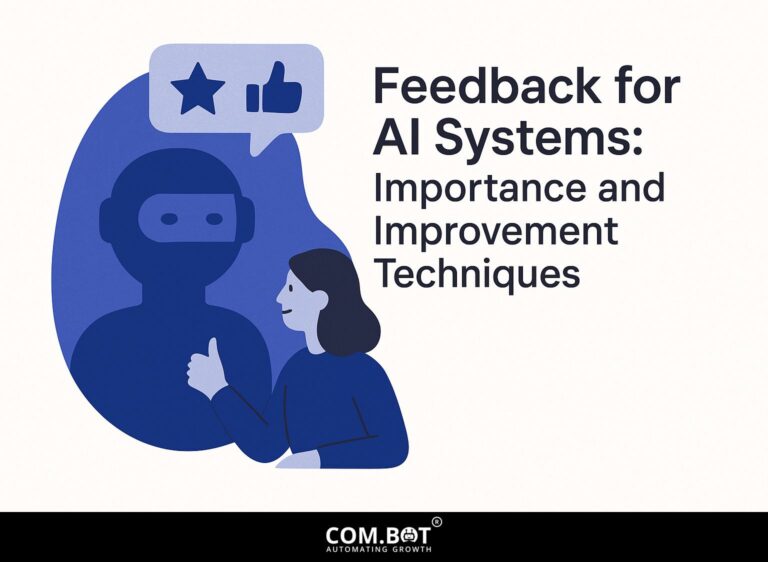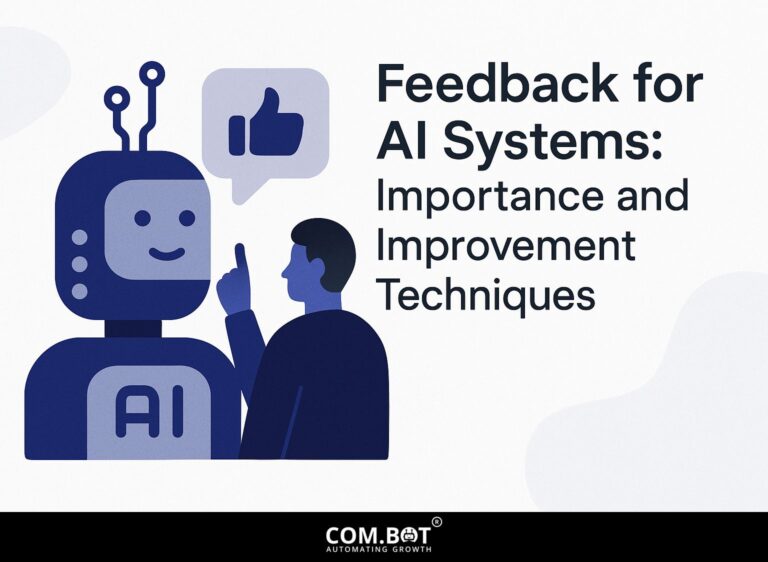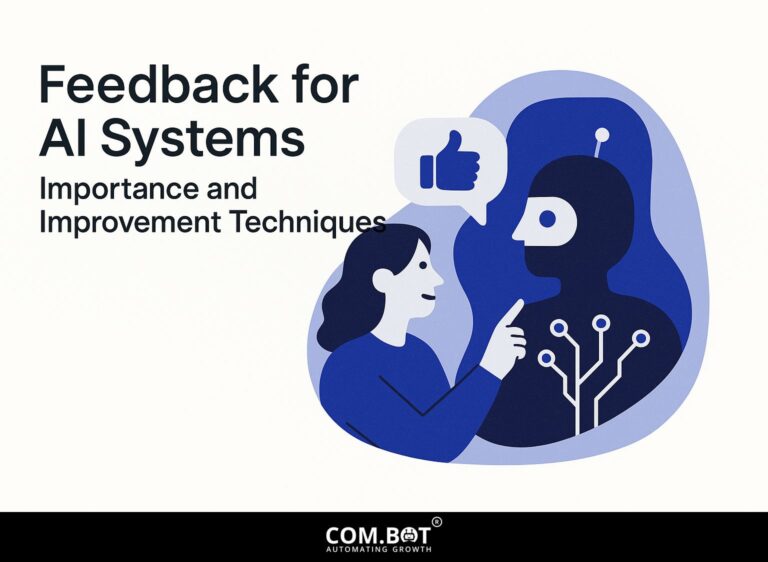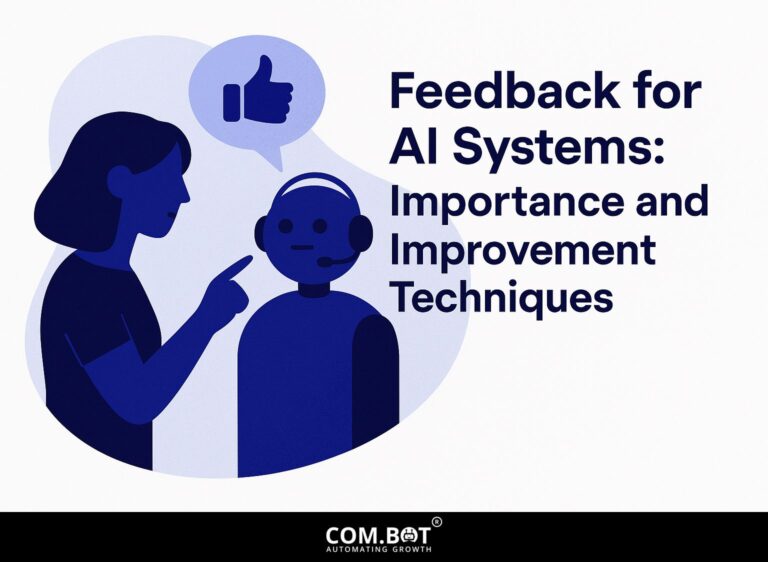Feedback for AI Systems: Importance and Improvement Techniques
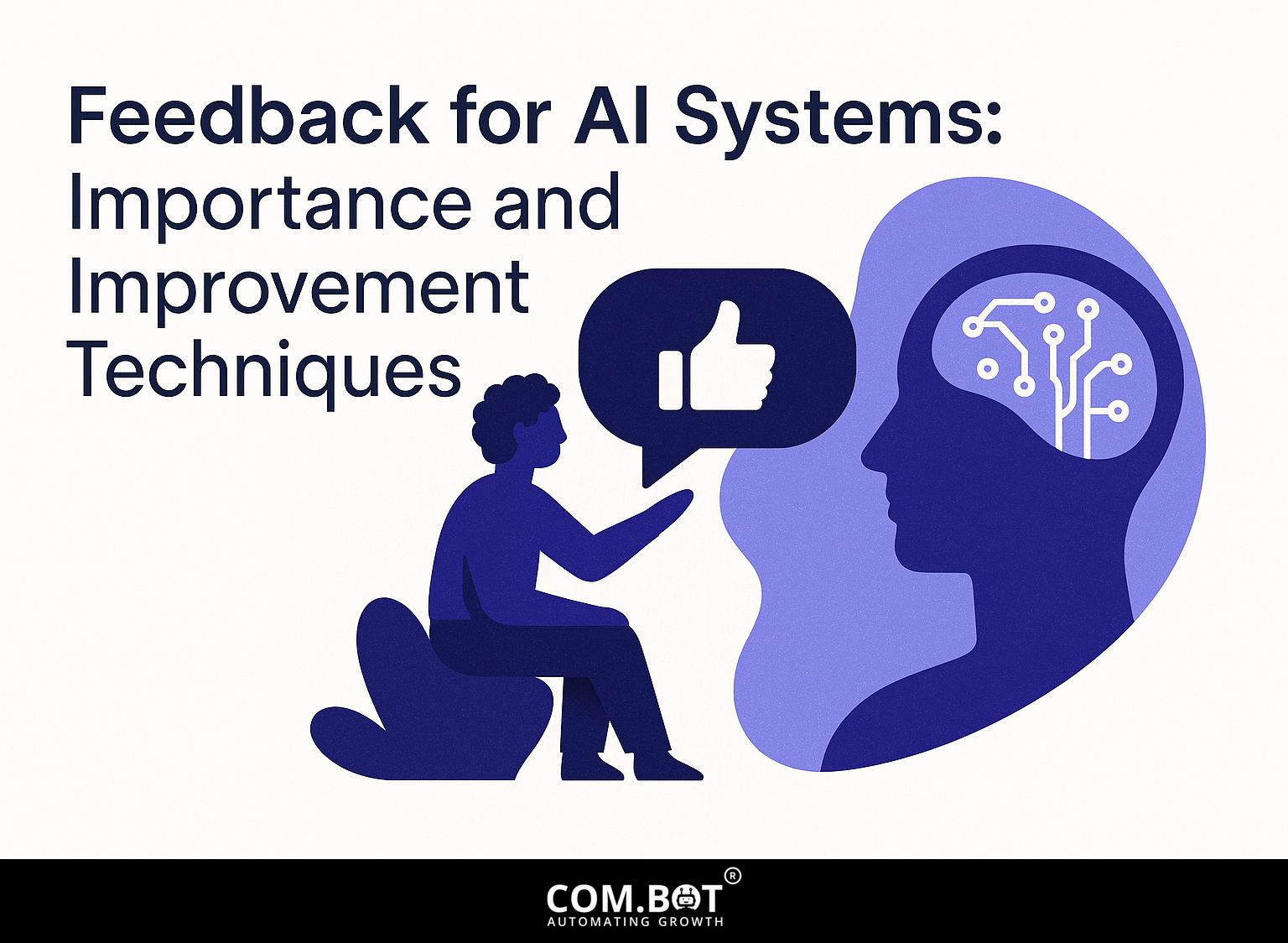
In the fast-changing field of artificial intelligence, human input is key for improving machine learning models. Organizations can improve reinforcement learning processes and increase model accuracy by using efficient human feedback systems. Tools like Label Studio facilitate this integration, ensuring continuous improvement. This article talks about why feedback is important for AI systems and describes how to make these interactions better, to get more reliable and fair AI outcomes.
Key Takeaways:
- 1 The Importance of Feedback in AI Development
- 2 AI Feedback Statistics 2024
- 3 Types of Feedback Mechanisms
- 4 Techniques for Collecting Feedback
- 5 Implementing Feedback for Continuous Improvement
- 6 Challenges in Feedback Implementation
- 7 Case Studies of Successful Feedback Integration
- 8 Frequently Asked Questions
- 8.1 What is the importance of providing feedback for AI systems?
- 8.2 How does feedback contribute to the continuous improvement of AI systems?
- 8.3 What are some techniques for giving feedback to AI systems?
- 8.4 How does feedback from users impact the performance of AI systems?
- 8.5 Why is it important to have a diverse set of feedback for AI systems?
- 8.6 What role does continuous feedback play in the development and improvement of AI systems?
The Importance of Feedback in AI Development
Feedback is essential in AI development because it directly affects how well models work and helps reduce biases in AI systems. This importance is further highlighted by various techniques aimed at refining feedback processes in AI systems. To delve deeper into effective methods for improving AI feedback, learn more about significant strategies that enhance AI performance.
AI Feedback Statistics 2024
AI Feedback Statistics 2024
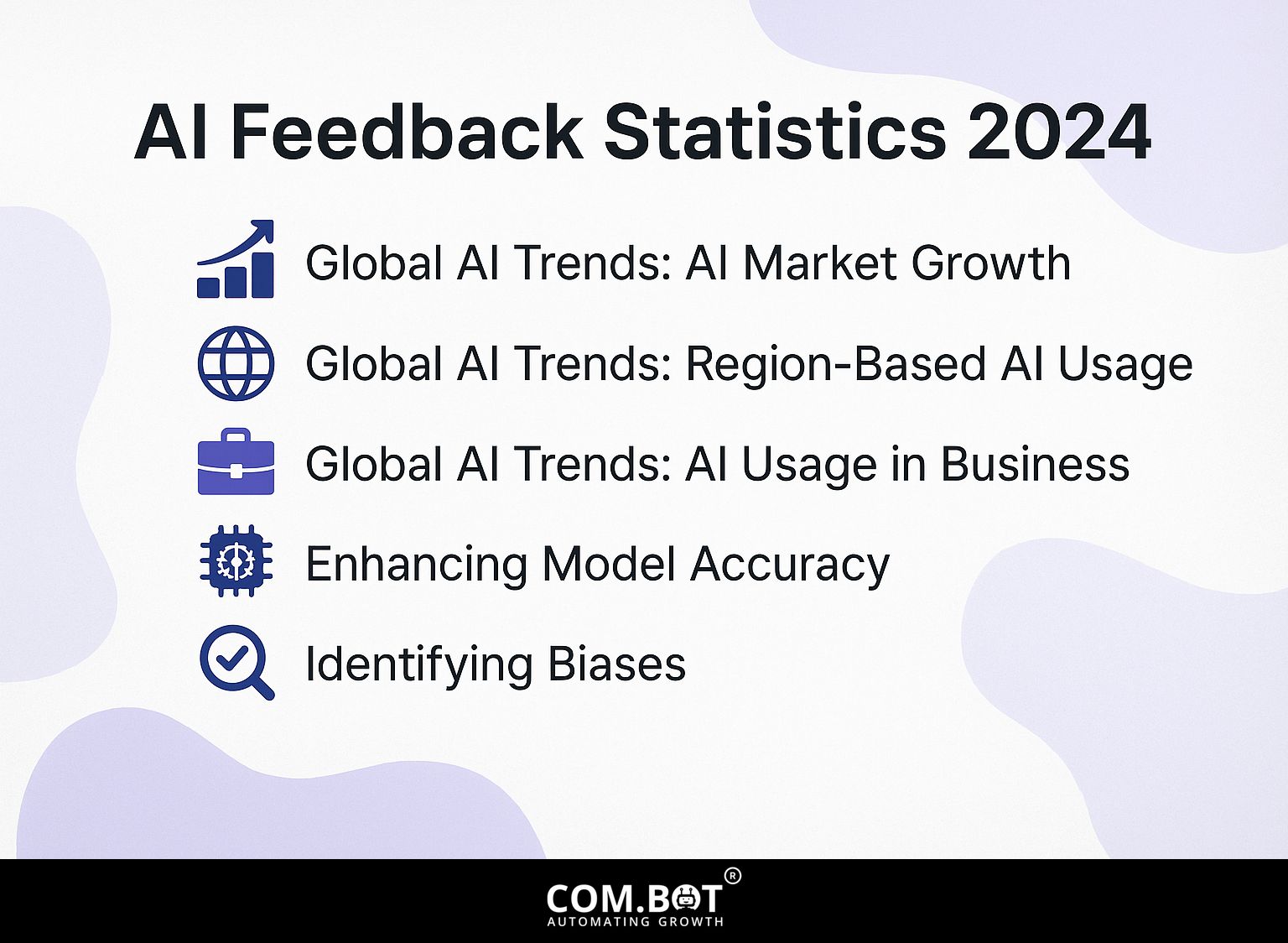
Global AI Trends: AI Market Growth
Global AI Trends: Region-Based AI Usage
Global AI Trends: AI Usage in Business
Global AI Trends: AI Influence on Job Market
The AI Feedback Statistics 2024 offers a detailed summary of the worldwide AI scene, explaining market expansion, regional usage patterns, company adoption, and its impact on employment. These statistics show how quickly AI technologies are growing and changing different areas.
Global AI Trends reflect a burgeoning market with a 2024 value of $279.22 billion, projected to soar to $1.81 trillion by 2030. This exponential growth, driven by a 32.9% compound annual growth rate (CAGR), highlights the important role AI plays in new technology being created and used. As industries integrate AI for efficiency and innovation, the market’s potential expands significantly.
- Region-Based AI Usage showcases North America’s leading 36.84% market share, attributed to advanced tech infrastructure and investment. Meanwhile, Latin America and Asia-Pacific & Japan exhibit 48% and 46% openness to AI, showing increasing acceptance and use, essential for regional economic development.
- AI Usage in Business reveals substantial adoption, with 72% of executives using AI to improve decision-making and make operations more efficient. 56% use AI in customer service, streamlining interactions and support. However, 41% report productivity impact This involves continuous changes to improve AI integration.
AI Influence on Job Market indicates a dual effect: expected creation of 300 million jobs by 2025 alongside a 75% fear of job replacement. As machines take over tasks, workers need to adjust their skills. Furthermore, 79% of SME owners show curiosity in AI, seeing how it can increase competition and encourage new ideas.
Overall, the AI Feedback Statistics 2024 Shows how AI is quickly influencing market trends, local applications, company activities, and jobs. This data highlights the need to thoughtfully use and adjust to AI in order to gain its benefits and deal with challenges from technological change.
Enhancing Model Accuracy
By integrating user feedback, AI models can achieve up to a 30% increase in accuracy during training sessions.
To achieve this result, set up a feedback loop with tools like Label Studio. Begin by gathering live user feedback on how the model is performing, then use Label Studio for data labeling, allowing team members to easily identify mistakes.
Next, regularly analyze this data to identify patterns and areas for improvement. To get the best outcomes, update your model every few weeks with the labeled data to match what users require.
This repeated process turns feedback into useful information, improving your model’s overall performance.
Identifying Biases
Implementing structured feedback processes can significantly reduce cognitive biases, improving fairness in AI system outputs.
To effectively reduce biases, organizations should integrate diverse feedback mechanisms throughout the AI development process. For instance, involving a diverse group of stakeholders to review model performance can reveal blind spots.
Tools like Amazon SageMaker Data Wrangler facilitate data visualization, helping teams identify biased patterns in datasets. Regular audits using tools like Fairness Indicators help keep track of model fairness across different demographic groups.
Successful projects, such as Google’s AI for Social Good, have demonstrated significant reductions in biased outcomes by engaging interdisciplinary teams throughout their lifecycle.
Types of Feedback Mechanisms
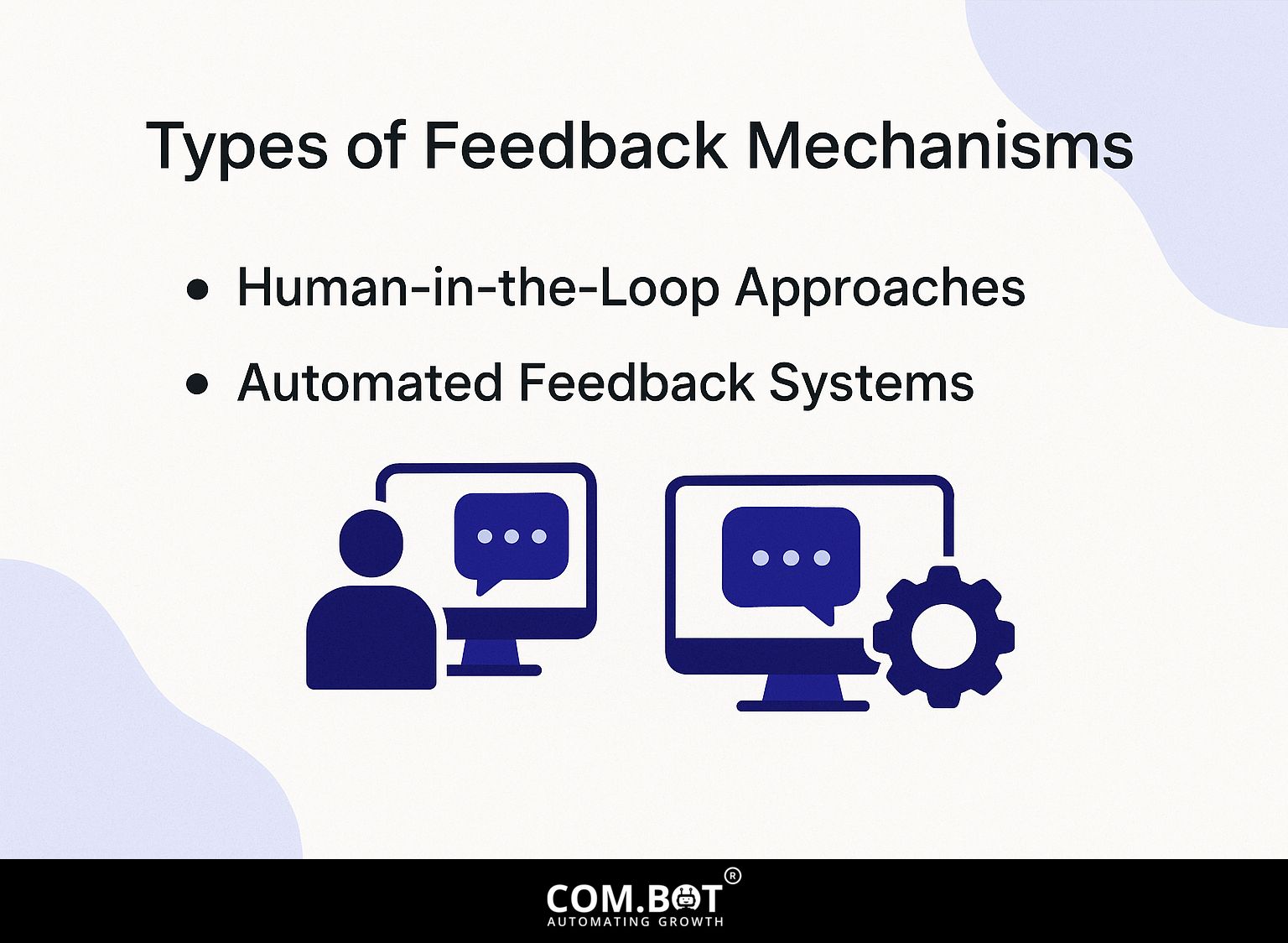
Feedback mechanisms in AI are mainly of two types: ones that involve human input and ones that work on their own, each with different roles. Understanding these mechanisms is crucial for enhancing system performance; as mentioned in our insights on Feedback for AI Systems: Importance and Improvement Techniques, effective feedback loops can significantly refine AI functionalities.
Human-in-the-Loop Approaches
Human-in-the-loop (HITL) approaches involve real-time user interaction, significantly improving AI training outcomes.
By using user feedback during the model training stage, organizations can improve accuracy and relevance.
For example, OpenAI’s API allows developers to solicit user input on suggested outputs, refining the model’s performance based on direct user experiences. This approach works well in content moderation systems. Human involvement checks AI decisions to lower the chance of bias.
Using tools like Labelbox or SuperAnnotate can simplify the feedback process, allowing teams to handle annotations and reviews smoothly. These strategies create AI results that better match what users want.
Automated Feedback Systems
Automated feedback systems use algorithms to collect and mix user data, enhancing AI’s ability to change and perform more effectively.
These systems can be implemented using tools like TensorFlow, which allows for real-time adjustments based on user interactions.
If a recommendation algorithm notices a decrease in user activity, TensorFlow can change content suggestions to better match what users like.
Using tools like Feedback Loop can help collect detailed opinions, while A/B testing methods give measurable results.
By using these methods together, organizations can create a strong system that greatly improves AI-based decision-making.
Techniques for Collecting Feedback
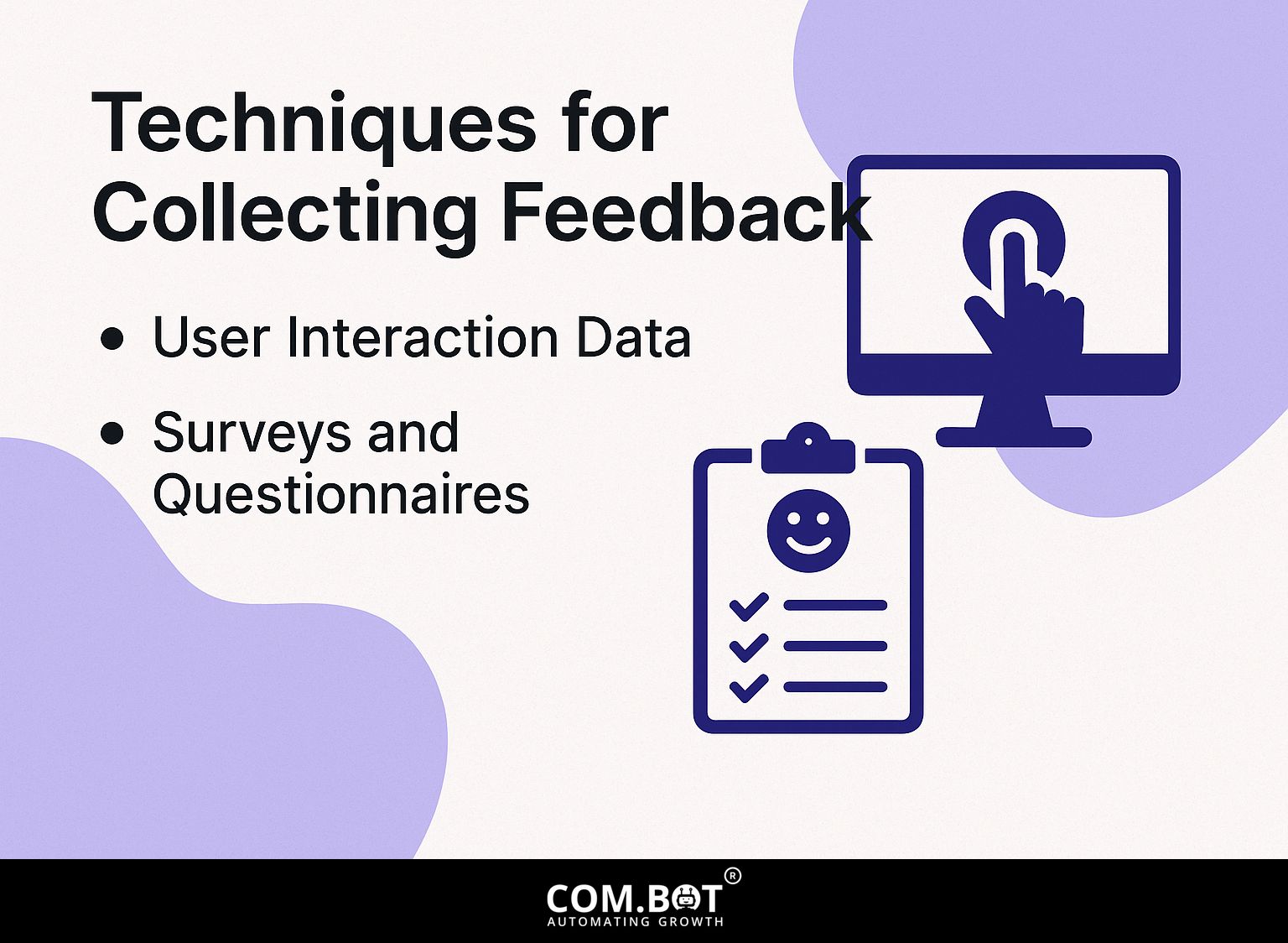
Gathering feedback correctly is important for knowing what users need and making AI better. For instance, implementing efficient feedback mechanisms can significantly enhance the performance of AI systems (our guide on feedback improvement techniques provides valuable insights).
User Interaction Data
Information from how users interact can help understand patterns that can make things work better, with tools analyzing how people are involved.
Using Google Analytics is important for keeping track of how users engage with your website.
- Begin by setting up event tracking to monitor specific actions, such as button clicks or video views.
- Create custom dashboards that visualize key metrics like bounce rate, session duration, and conversion rates. Monitoring these trends over time helps inform AI training models by identifying user behaviors influencing content engagement.
- Google Data Studio lets you improve your reports with charts, simplifying the process of sharing findings with your team.
Surveys and Questionnaires
Surveys and questionnaires can give useful feedback from users, offering helpful information for AI changes.
To design effective surveys, start with clear objectives. Use platforms like SurveyMonkey for its easy-to-use design, or Google Forms for a no-cost option.
Use different question types-multiple-choice for clear data and open-ended for more detailed answers.
After collecting responses, analyze the data through built-in analytics tools, looking for trends and significant feedback patterns. For example, if users ask for more custom content, make that a priority in your AI development.
This organized method guarantees useful results from your surveys.
Implementing Feedback for Continuous Improvement
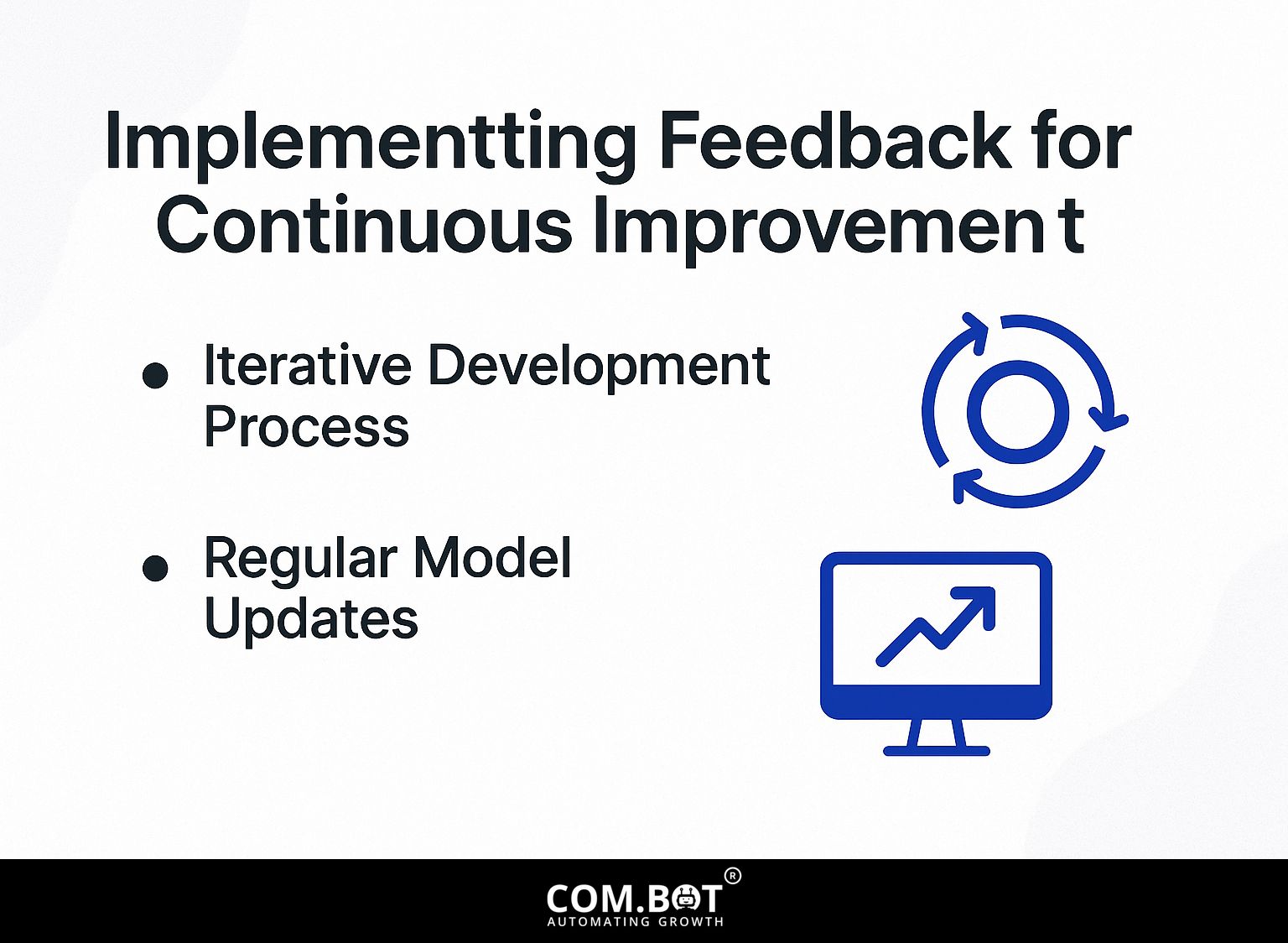
Using feedback loops is important for continuous improvement, ensuring AI systems grow to meet user needs and expectations.
Iterative Development Processes
Regular updates based on user feedback improve AI performance over time.
For example, companies like Spotify and Slack use information from users to improve their algorithms.
Spotify’s Discover Weekly playlist is created by analyzing users’ listening habits and recommending music that fits their preferences. Similarly, Slack frequently gathers feedback through in-app surveys and uses that data to roll out features in response to user needs.
This method supports an active development process, helping these platforms remain useful and easy to use, while promoting user interaction and happiness.
Regular Model Updates
Regular model updates, driven by user feedback, can lead to a 20% increase in overall system effectiveness.
Using feedback from users can improve models such as OpenAI’s GPT series. Through fine-tuning processes, developers can adjust their AI’s outputs based on specific user needs.
Tools like TensorFlow and PyTorch facilitate these updates by allowing easy retraining of models with fresh data. Using platforms like Hugging Face offers access to a collection built by the community, encouraging ongoing development.
Using user feedback often helps organizations improve their performance and create a better experience for users.
Challenges in Feedback Implementation
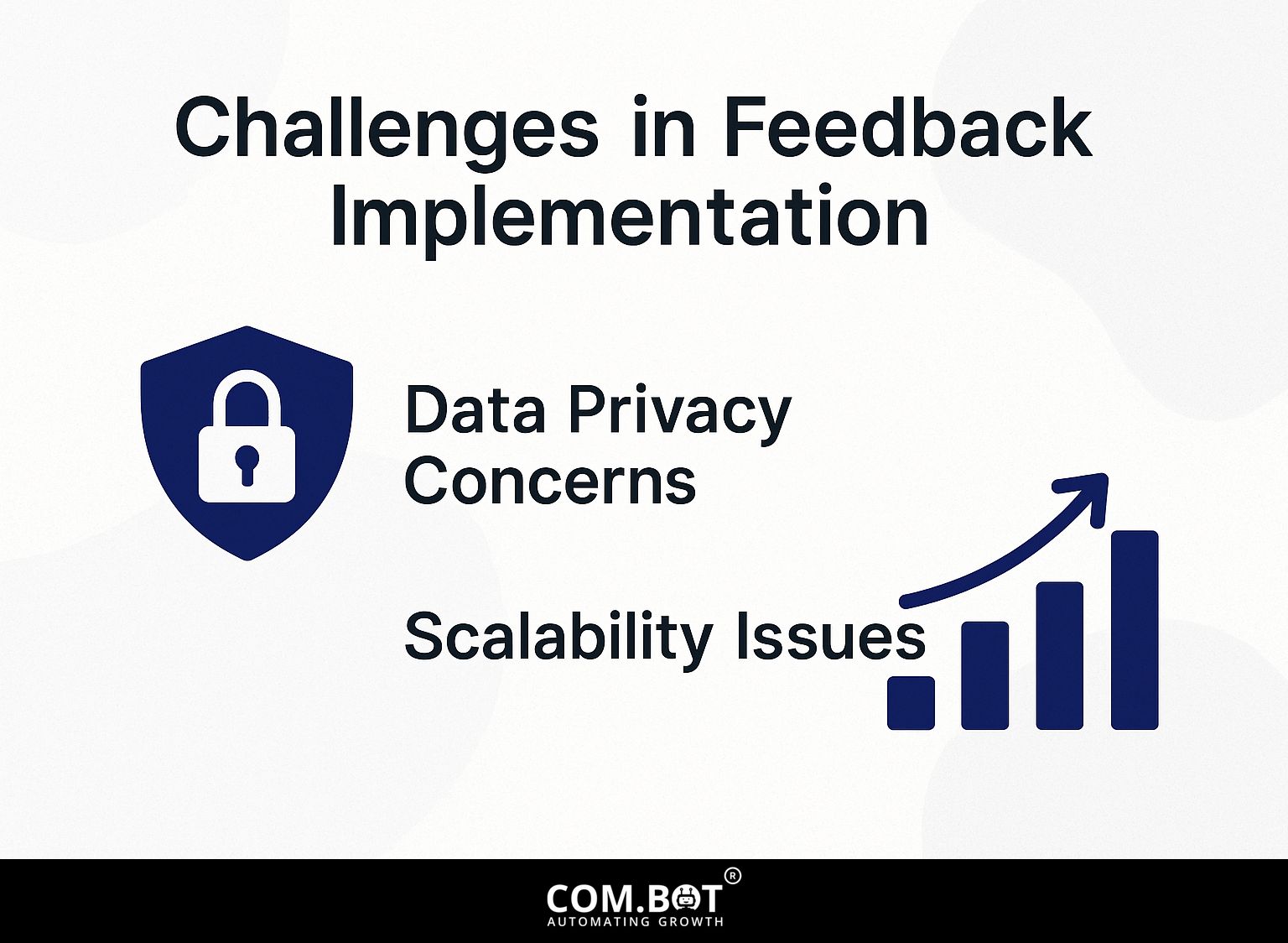
Setting up good ways to give feedback has problems like keeping data private and handling growth. For an extensive analysis of these challenges and the importance of feedback systems, our comprehensive study on improving AI systems offers valuable insights.
Data Privacy Concerns
It’s challenging to keep data private; over 60% of users are concerned about how their feedback is handled.
To address these concerns, organizations must prioritize compliance with regulations such as the GDPR. Start by obtaining explicit consent from users before collecting feedback, ensuring they understand the purpose of data usage.
Implement tools like OneTrust or TrustArc to facilitate consent management. Always remove personal details from data to protect user identities. Regularly review your data procedures to keep privacy rules and clearly show how feedback is used, building trust and confidence among users.
Scalability Issues
Scalability poses a significant challenge for feedback mechanisms, especially when managing large datasets from user interactions.
To handle this problem successfully, think about using cloud services like AWS for strong data management.
Start by employing Amazon S3 for storing user feedback securely and cost-effectively. Next, use AWS Lambda to process this feedback instantly, allowing it to quickly become part of your systems. For analytics, tools like Amazon QuickSight can help visualize patterns and trends in user responses.
This setup increases scalability and allows for easy changes as user data expands, keeping your feedback systems effective and quick to respond.
Case Studies of Successful Feedback Integration
Examining case studies reveals how effective feedback integration can lead to substantial improvements in AI applications.
A tech company improved their chatbot using customer feedback, leading to a 40% rise in user happiness.
They implemented a two-step methodology: first, gathering input through surveys and analyzing chat logs, then adjusting algorithms based on user interactions.
An e-commerce platform used A/B testing for its recommendation engine, resulting in a 25% increase in sales.
By frequently improving their AI systems based on customer feedback, both companies improved user interaction and trust.
Frequently Asked Questions
What is the importance of providing feedback for AI systems?
Feedback helps AI systems improve accuracy. The system improves by correcting errors, leading to smarter choices and results.
How does feedback contribute to the continuous improvement of AI systems?
Providing feedback helps the AI system to identify patterns and trends in data, leading to the development of better algorithms and models. This ultimately results in better performance and improved ability to make decisions.
What are some techniques for giving feedback to AI systems?
Some common techniques for providing feedback to AI systems include labeling data, providing specific instructions or rules, and using reinforcement learning methods such as rewards and punishments.
How does feedback from users impact the performance of AI systems?
User feedback is essential for AI systems as it helps identify areas for improvement and potential biases in the data. It also allows the system to adjust to changes in user behavior and preferences, resulting in better performance and more accurate predictions.
Why is it important to have a diverse set of feedback for AI systems?
Different types of feedback are important for AI systems to prevent biased decisions. The system learns from different views and experiences, resulting in more balanced and just results.
What role does continuous feedback play in the development and improvement of AI systems?
Regular feedback is important for the continuous growth and betterment of AI systems. It enables the system to adjust to different situations and continually learn to make better decisions.
